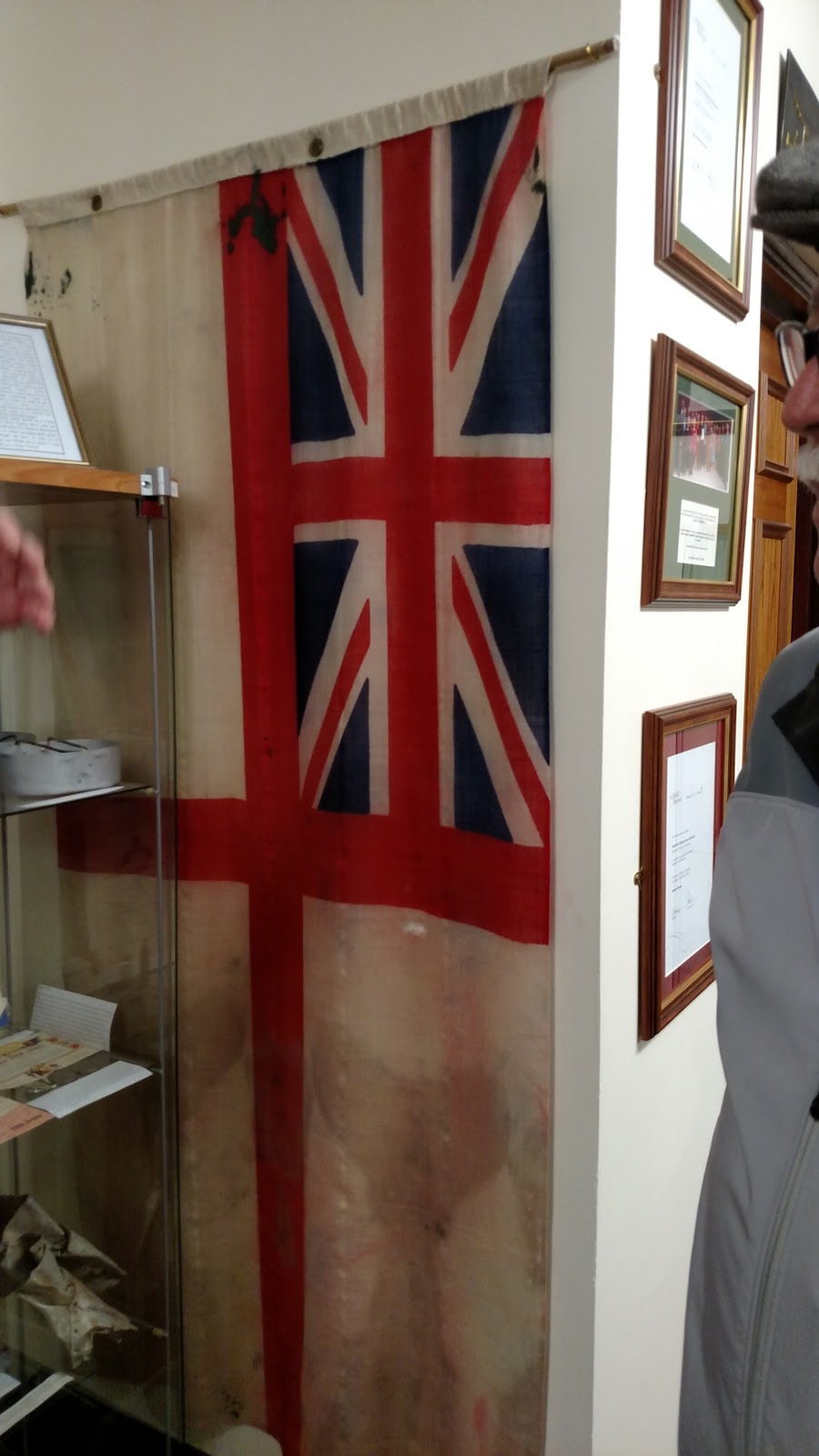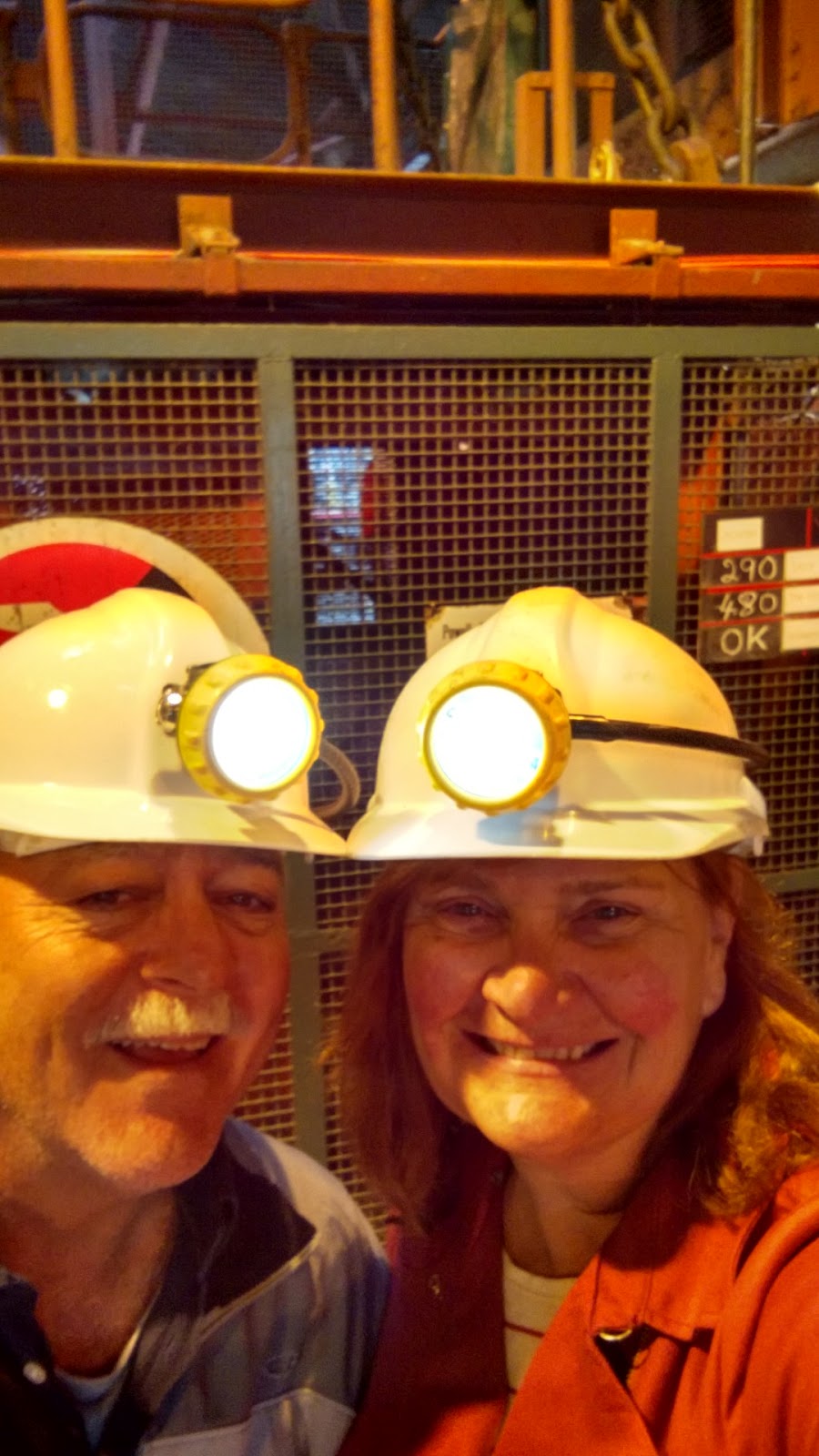No trip to Wales could be complete without spending time visiting coal and iron mining. While I thought this would be the story from a bygone day I was mistaken. While many of the mines and Ironworks are now closed, for the people who worked them and their families it is still their identity.
We drove out on a drizzling Monday morning to Blaenavon to visit the heritage center, iron works and Big Pit coal mine.
 Unfortunately the heritage center is closed on Monday so we went to the Cordell Museum. What a delightful place! It is currently located in the former Workingmen's Institute, staffed by volunteers and filled with memorabilia of the town's people. The staff that was there that morning we're constantly stopping their tasks to be sure our guide had shown us this or that. I especially enjoyed the flirtatious attention of a very elderly gentleman whose name I don't know but whose smile I will never forget. Among the local treasure is a flag from a British WWII ship. The ship had been captured by the Japanese and a sailor from Blaenavon managed to get the ship flag before he was taken. He kept the flag hidden while he was a POW and brought it home after the war.
Unfortunately the heritage center is closed on Monday so we went to the Cordell Museum. What a delightful place! It is currently located in the former Workingmen's Institute, staffed by volunteers and filled with memorabilia of the town's people. The staff that was there that morning we're constantly stopping their tasks to be sure our guide had shown us this or that. I especially enjoyed the flirtatious attention of a very elderly gentleman whose name I don't know but whose smile I will never forget. Among the local treasure is a flag from a British WWII ship. The ship had been captured by the Japanese and a sailor from Blaenavon managed to get the ship flag before he was taken. He kept the flag hidden while he was a POW and brought it home after the war.
Just up the road are the Ironworks. The development of the Gilchrist-Thomas process here made the cheap, low quality iron ore usable. The rights to this process were later sold to Andrew Carnegie. Although production ended in the early 1900’s the forges at the site were still being used and helped with the production of steel shells during both world wars. In addition to the furnace ruins you can visit restored homes of the workers ranging from the 1700’s to the 1940’s.
 Signs at the site, recorded voices and documents at the Cordell Museum all told the same story. Although it was hard work, it was honest, useful and important work. The name Blaenavon was stamped on all of the products that left the works. This was the same as if every man had his own name on it. There was a true sense of community among those who spent their days together amid the heat of the blast furnaces.
Signs at the site, recorded voices and documents at the Cordell Museum all told the same story. Although it was hard work, it was honest, useful and important work. The name Blaenavon was stamped on all of the products that left the works. This was the same as if every man had his own name on it. There was a true sense of community among those who spent their days together amid the heat of the blast furnaces.
Our last stop was at Big Pit. This is where the coal was mined to provide the fire for the blast furnaces at the Ironworks. Equipped with helmet, headlight and oxygen tank ( just in case) we headed down the shafts into the mine. But not until all cell phones, watches, keys, belts and anything else metal were taken to a safe. They are serious about the possibility of gas and sparks!
 We spent a good deal of time ducking our heads, bending over and moving carefully in a dark, tight space. Our guide, a former miner, warned us of dangers, showed us places where he and others had worked, and described the physical toll mining had taken on him and his friends. Yet with every tale of risk and repercussions was the statement “I wouldn't have traded this job for anything”. It was the camaraderie he spoke of, the way the miners trusted and supported each other; a brotherhood based on hard work and danger. These sentiments were echoed by other former miners as we visited the above ground exhibits. For them their youth spent underground were the best years of their lives
We spent a good deal of time ducking our heads, bending over and moving carefully in a dark, tight space. Our guide, a former miner, warned us of dangers, showed us places where he and others had worked, and described the physical toll mining had taken on him and his friends. Yet with every tale of risk and repercussions was the statement “I wouldn't have traded this job for anything”. It was the camaraderie he spoke of, the way the miners trusted and supported each other; a brotherhood based on hard work and danger. These sentiments were echoed by other former miners as we visited the above ground exhibits. For them their youth spent underground were the best years of their lives
No comments:
Post a Comment